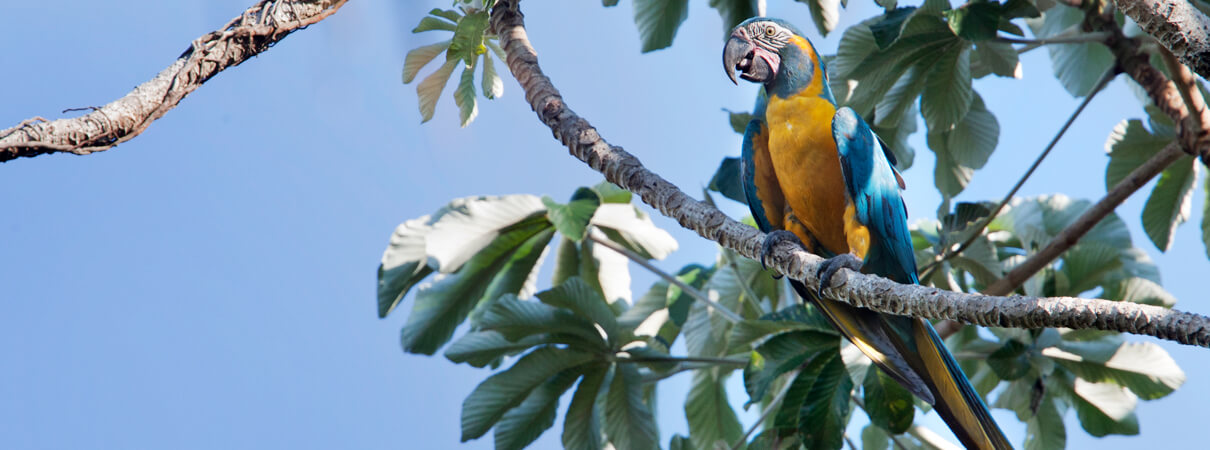2017 Highlights in Bird Conservation
From the mountains of Venezuela to the shores of Lake Erie, American Bird Conservancy teamed up with partner organizations across the Western Hemisphere in 2017 to advance conservation of the Americas' rarest birds. Here are a few of the year's highlights.
Breakthroughs for Rare Species
It's hard to protect birds if you don't know where they live. So when an international team of researchers announced in 2017 that it had solved one of South America's great bird mysteries, it gave new hope to conservation efforts for the critically endangered Táchira Antpitta. The International Union for Conservation of Nature (IUCN) lists the species as critically endangered; since the species hadn't been seen since it was first recorded in the 1950s, many feared it had been lost for good.

Táchira Antpitta by Jhonathan Miranda
Scientists of the Red Siskin Initiative (RSI) — a conservation partnership of the Smithsonian and several scientific organizations in Venezuela — organized a team in 2016 to search for the antpitta. Probing deep in the mountainous forests of western Venezuela, the scientists rediscovered the plump brown bird species on their first day in the field. The team was led by Jhonathan Miranda of RSI and Provita, and ABC provided financial support through a William Belton Conservation Fund grant as part of our ongoing Search for Lost Birds.
Meanwhile, in Bolivia, a different expedition yielded answers to a question that has vexed conservationists for years: Where do most Blue-throated Macaws breed? In March 2017, an expedition of biologists led by ABC partner Asociación Armonía discovered new nesting sites for the species, which is one of the world's rarest parrots. This discovery is a tremendous boost for conservation of the macaw, whose numbers in the wild are estimated at only 250 to 300 remaining birds.

Blue-throated Macaw by Daniel Alarcon, Asociación Armonía
Protecting Birds' Full Life-cycles
It's no small feat to conserve birds that travel 4,000 miles or more each year across continents and international borders. We work hard to ensure that priority species have the habitat they require at all stages of their life-cycles: breeding, wintering, and stopover on migration.
In 2016, we announced our hemisphere-wide BirdScapes approach to migratory bird conservation. In 2017, we made significant strides in putting plans into action by helping landowners to engage in smart land-use practices that help birds — from wintering Wood Thrush on a black pepper farm in Guatemala to Yellow-billed Cuckoo along riparian corridors in Texas — and their habitats.

Yellow-billed Cuckoo by Mark Johnson
We also advanced our plans for two more Birdscapes in California and Arizona that will further benefit Yellow-billed Cuckoo, a species whose western population is listed under the Endangered Species Act, by restoring the southwestern riparian habitat on its breeding grounds. In the year to come, our blueprint for conserving birds' habitat across their full life-cycles will continue to evolve.
Combating Dangerous Threats
The skies will be safer for migrating songbirds such as Kirtland's Warbler thanks to ABC's tenacity in eliminating some of the most dangerous threats to birds. In 2017, ABC and Black Swamp Bird Observatory successfully stopped the Ohio Air National Guard from constructing a wind turbine in a migratory corridor along the coast of Lake Erie. ABC and BSBO had sued the Ohio Air National Guard in 2016, alleging a violation of the Endangered Species Act and other federal laws for pursuing this. Wind turbines can be fatal for birds: Scientists estimate that roughly half a million birds die annually in the United States from collisions with wind turbines.

Kirtland's Warbler by Ron Austing
In response to the lawsuit, the Air National Guard said in June 2017 it had not authorized or approved plans to build the turbine, and the lawsuit was dismissed. The site at Camp Perry, situated less than a mile from the lake's shoreline, would have been the first wind energy development on public land in this ecologically sensitive area. The victory sets an especially important precedent because many other wind energy projects are currently being planned around the Great Lakes, which could threaten the future of millions of migratory birds and bats.
Wind turbines aren't the only threat birds confront when traveling through the airspace: each year, approximately 7 million birds collide with communications towers in North America. Thanks to a campaign by ABC and our partners to urge tower operators to change their lighting to be safer for birds, in 2017 roughly 9 percent of tall towers over 350 feet turned off their steady-burning red lights. As part of this effort, there's also a new website and mobile app to help concerned citizens reach out to tower engineers and encourage them to do the same.
To learn more about how ABC's conservation framework takes shape on the ground, explore our conservation programs, including International, Oceans and Islands, Migratory Birds, and Policy & Advocacy.


















































